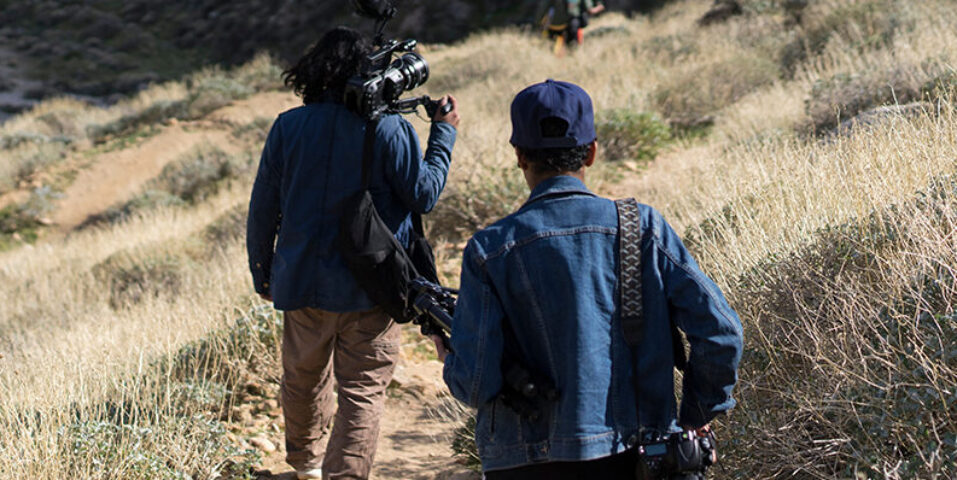Rising sea levels, extreme heat events and increasingly intense rainfall patterns are some of the impacts of global warming already being experienced across Australia. The State of the Climate report (by CSIRO and the Bureau of Meteorology) shows Australia has warmed by about 1.47C since 1910.
According to the Australian Bureau of Statistics, the screen industry contributes more than $6 billion to the Australian economy, the largest amount of any creative industry, employing about 55,000 people. But with each large-scale screen production contributing an average of 3373 tonnes of CO2 emissions, the sector faces an opportunity to set a benchmark for sustainable practices, and to lead the essential sustainability transformation required to support the government’s ambitions, goals and reporting requirements of APS Net Zero Emissions by 2030.
As a leading institution in Australia and globally, AFTRS is deeply committed to supporting and promoting environmental practices in all its actions. The School has taken steps to embed responsible resource use throughout the organisation, including tracking usage of air conditioning, lighting, power, water, waste, paper and recycling over several years. Sustainability values are also embedded in AFTRS courses, with a suite of scalable, adaptive face-to-face and online offerings expanding beyond our physical Sydney site to people in local, regional and remote areas across Australia.
AFTRS is now bringing all of this work together in its Environmental Sustainability Strategic Plan (ESSP), which responds to the ambitions articulated in the School’s five-year corporate strategy – Creating the Future.
The plan is guided by First Nations knowledges and values, including wise practice, deep listening and reciprocity, and recognises 60,000-plus years of ongoing and reciprocal care for Country.
The First Nations idea that “Country is Alive” is at the heart of sustainability. This means that as humans, we are connected to everything around us – landscape, water, stars and animals. We are part of a living system where everything is interconnected. Living Country is also about how we, as people, can put this idea into action. This philosophy is illustrated in the GAPALA artwork on the cover of the ESSP by Gwiyaala Aboriginal Art: Bronwen Smith Yuin, Nation Walbunja woman, and Gavin Chatfield, Wiradjuri man. It represents ripples from a canoe and reflections of stones being thrown in the water – every movement has its effect.
The ESSP embraces five pillars in synergy with a systemic wisdom view of the School’s remit:
1 – Infrastructure and Operations
A holistic view treating systems (information, media, nature) as interconnected and informed networks with an understanding that everything is part of a system and respecting the limits on ecosystems. Some of the primary initiatives taking place are reducing environmental impact through reducing waste, saving energy in the building, digital systems, offsite productions, and increasing staff and student awareness of environmental sustainability practices.
2 – Transport
A view on sustainable movement and how offering remote-access, regional and interstate courses minimises the need for travel and supports local engagement from ensuring that any work-related travel is essential and is offset by green credits, and working with local First Nations communities to deliver courses on Country through the On Country Pathways Program.
3 – Curriculum
An integrated approach to how media impacts the environment, from the messages conveyed to the impacts of media production itself, enabling students, industry and the broader public to make positive changes to reduce environmental impact and be more sustainable. This is done by applying ecoliteracy and ecomedia literacy values and practices into the School, such as an induction workshop on sustainable production for all student productions; embedded resources to promote awareness of sustainability; environmental skills and practices in the curriculum; and specialist environmental practice training.
4 – Sustainable Productions
Taking responsibility for caring for the land by applying sustainable practices in every student production, focusing on reducing emissions and offsetting carbon. These practices include setting and tracking production sustainability measures and setting production briefs for undergraduate and postgraduate productions, in a way that promotes and raise awareness of sustainability.
5 – Research and Knowledge Exchange
Integrated and ethical spaces of mutual respect where new ideas can grow and adapt to changing environments, are core to AFTRS’ approach. They inform our partnerships and our research projects. The School’s commitment to transformative excellence in learning and teaching environmental sustainability and approaches to knowledge are key in supporting living knowledge systems.
The School is an education partner of Sustainable Screens Australia (SSA), providing access to resources, education and toolkits to accurately measure the carbon footprint of productions and is involved in Green Ears in the audio sector.
By taking practical steps to reduce environmental impact, the School aims to lower its carbon footprint and inspire others in the industry to adopt sustainable practices. Resources will be available to support these efforts and promote Living Country as a guiding principle for all our work.
Learn more about AFTRS’ Environmental Sustainability Strategic Plan here.
